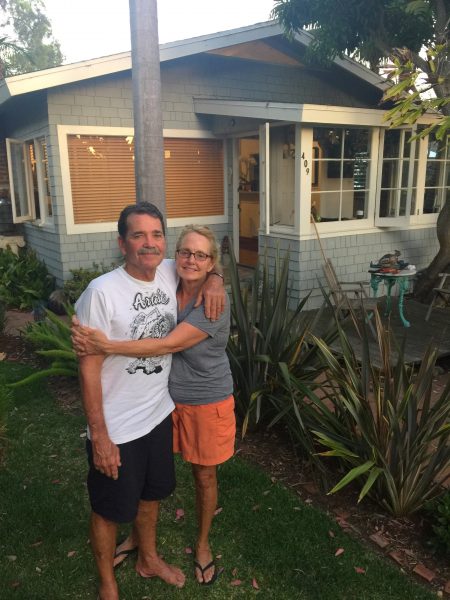
By Cassandra Reinhart, Special to the Independent
The Laguna Beach Planning Commission has decided to do away with the city’s long-standing historic home rankings of C, D, and E, and instead adopt the more widely used 1-5 ratings scale of the Secretary of the Interior.
“Turning the page on labeling for change sake is a good thing,” said Planning Commissioner Susan Whitin. “It is clearer and simpler, we strive to make this ordinance a more usable document for everyone.”
The four-hour discussion was the fifth hearing on revisions to the city’s Historic Preservation Ordinance, a controversial topic that again drew a packed house from both sides of the debate: historic supporters who say looser regulations will mean lost neighborhood character, and homeowners who say stricter regulations and involuntary placement on an outdated city historic inventory infringe on their property rights.
“If a ‘C-guy’ wants to make an application to get historic incentives, if he wants to have an application to get the benefits of the Mills Act, let him prove his case,” said property rights proponent Larry Nokes. “Let’s stop tripping over these designations because they are too vague and too meaningless when we have the state classification codes that are very precise and specific.”
Commissioners maintained that any structure 70 years or older be given special historic review consideration when seeking project approval, instead of a fixed cut-off date as earlier proposed of 1955. Commissioners feel a “rolling age” of 70-years-or-older homes will keep the ordinance from coming back for revisions every decade, and historic scrutiny would only be triggered if a homeowner was seeking to make changes or repairs to their property. If the property was found to have historic significance, a public hearing will be held and the property will be given a historic rating.
“It’s becoming a level playing field now,” said Whitin. “Any one of us that comes in with any change to our property is going to be reviewed in the same way. No one is going to be singled out.”
Currently, when homeowners want to repair or make updates to their homes, the city evaluates the home for historical significance. Homes listed on an outdated 1981 Historic Inventory have faced further scrutiny, and were classified as E for exceptional, K for key, and C for contributive to a neighborhood’s overall character. To comply with the California Environmental Quality Act, or CEQA, changes made to current C-rated structures must also comply with standards set out by the Secretary of the Interior in the state Office of Historic Preservation and may trigger an environmental impact study. The commission has recommended the city not adopt the 1981 inventory, instead using it only as a reference document.
“Now every single house over 70 years old that wants to change is going to be going through a process. We are going to end up with more houses that are resources,” said commissioner Anne Johnson. “That is a good thing.”
Commissioners also asked planners rewrite the ordinance’s historical-structures parking requirements to align with the Secretary of the Interior’s historic ratings system. Currently, E and K-rated historic buildings in commercial zones can receive a required parking reduction of up to 75 percent based on the degree of which the building is restored. City staff advised that SOI standards do not differentiate enough between the E and K ratings, and under the new system the parking reduction percentage and standards will have to be revised.
Even with the commission’s revisions, residents at the meeting on both sides of the issue still find the ordinance confusing.
“It’s full of ambiguity and omissions that are bound to make it hard to understand or use,” said Johanna Felder, president of Village Laguna, a group that strives to maintain village character. “A number of inconsistencies that need to be resolved and gaps that need to be filled before it goes to the city council.”
“If this were an English assignment my teacher would have given me an F and marked my paper with notes like vague, ambiguous, redundant and confusing,” said property rights proponent and resident Gale Keller.
City staff will make the commission’s changes as directed, and bring back yet another version of the revised ordinance on Oct. 18 with options for the parking requirement reductions. As directed, city staff will incorporate the SOI historic status codes and using 70 years as a benchmark for city historic review.
“Ultimately we are going to make things less onerous on C-rated structures,” said commissioner Ken Sadler. “It is an improvement on what we currently have.”




